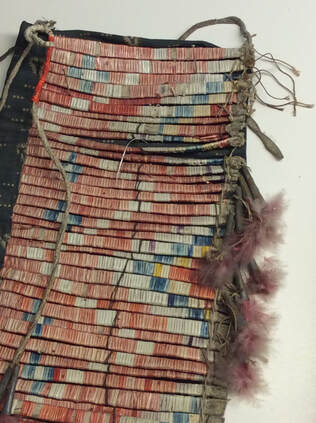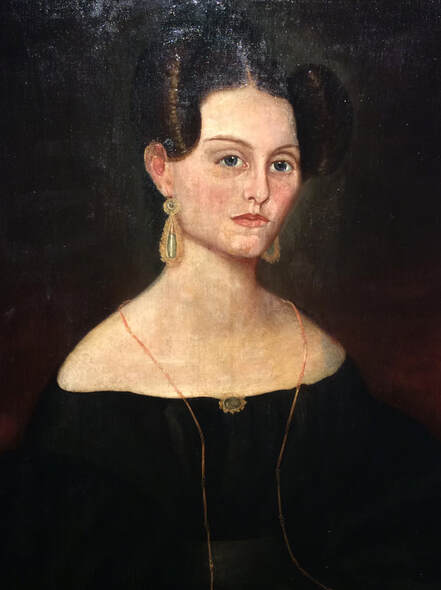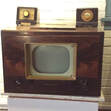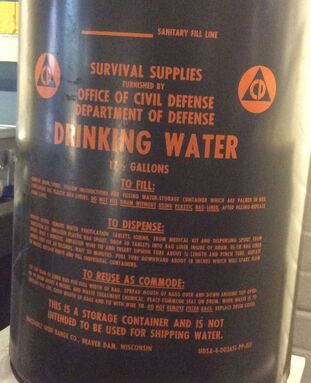Highlights from the Winona County Time Line Exhibition
|
The History Center has a collection of Native Americana found in the second floor time line exhibit. This example of quillwork highlights the intricate beauty of this traditional art form. Long before being introduced to the colored beads brought by Europeans, indigenous peoples used the quills from birds, and more commonly, porcupines, for decorating utensils, clothing and accessories. The hollow quills were soaked to soften, dyed and then attached using a variety of techniques based on what the quill was decorating. Learn more about Dakota, Ho-Chunk, and French Indigenous Communities Between St. Paul and Prairie du Chien, ca. 1300–1865 and Minnesota's American Indian Nations.
|
|
This portrait of Harriet Huff hangs a bit further down the time line exhibit. Harriet was born in 1810 and married Henry Huff in 1833. They came to settle and develop what we know now as Winona. In fact, the name Winona was decided by Henry, over Montezuma. The Huffs built a grand home, still standing along the street named for them. The Huff's mansion stood out among the prairie as an example of what Henry envisioned Winona to become. He stated, "I am building this home to make a statement for the future." Harriet and Henry moved into the house just as Minnesota became a State in 1858. Life was not easy however, especially for Harriet. They couple lost all six of their children at young ages. Harriet was in the center of Winona's social scene for over twenty years, while Henry traveled as a land and railroad developer. When their son, Charlie, died in a hunting accident in Wisconsin, they moved to Chicago, where Henry spent much time anyway for business. More bad luck struck and they lost all their belongings in the Great Chicago Fire shortly after arriving. Harriet then separated from Henry. In 1894 she returned to Winona to live with a niece and died about a year later.
|
|
In 1949 Winona County saw its first television! Marvin Currie, a St. Charles auto dealer, made the front page local news when he was the first person in Winona County to own a television. His second set is on exhibit at the History Center. The screen is just under nine inches and its workings are encased in wood. The tuners sit atop it and an antenna was mounted on the roof to receive program signals.
|
|
This water container reminds some of the Cold War era. Civil Defense was well funded. Planners assumed every city of 50,000 or more was a target and the U.S. and Soviet Russia spent fortunes developing nuclear weapons. Winona was small at about half that population, but was downwind of the Dakota missile silos and located on an important shipping lane, the Mississippi River. The County had its own elaborate shelter system and the funding to stock it with plenty of supplies like this water container. You may still spot a fallout shelter sign on some local buildings today.
|



